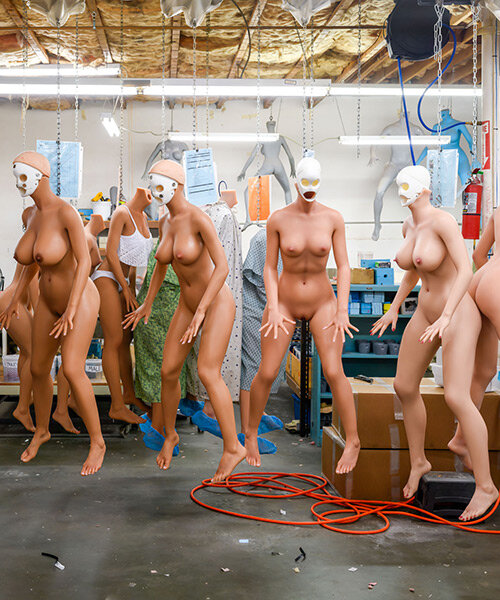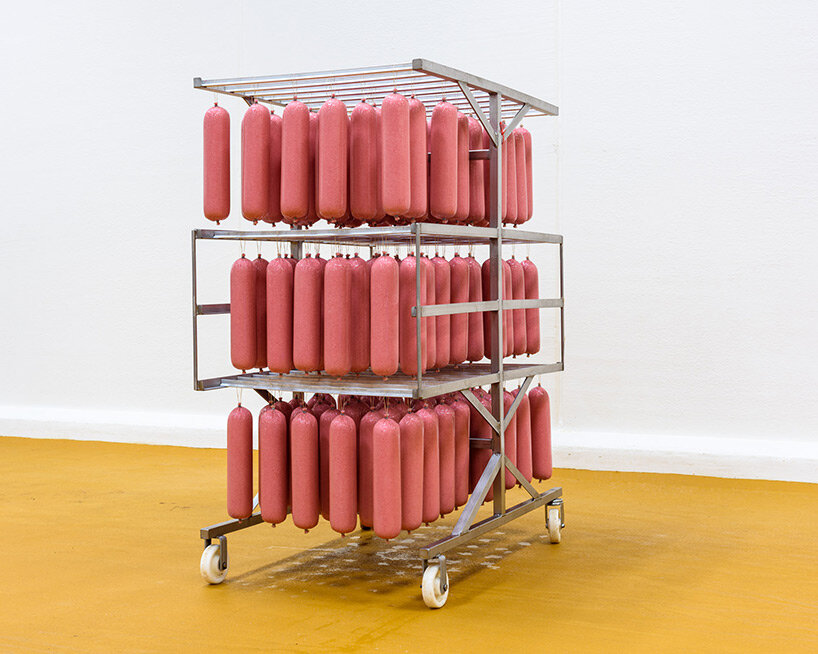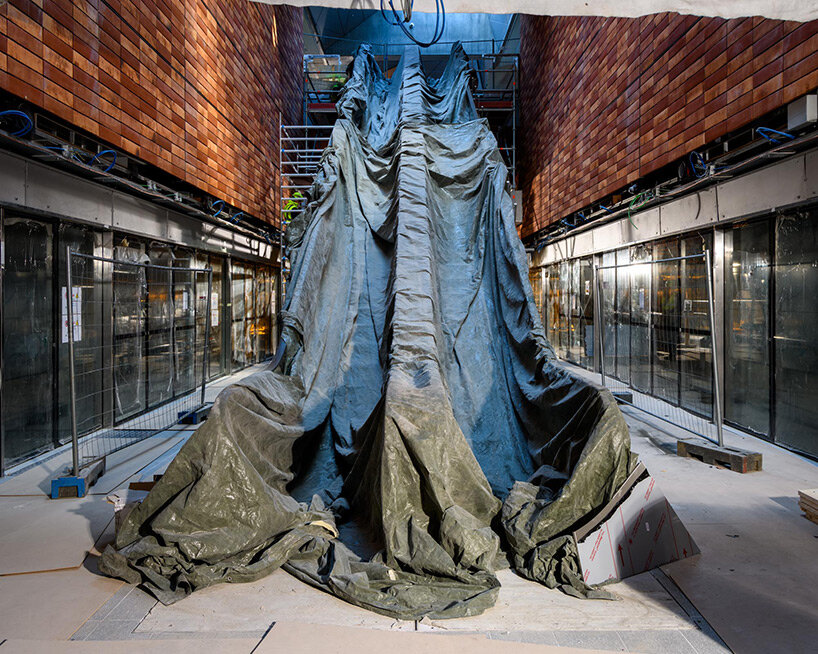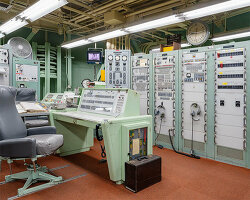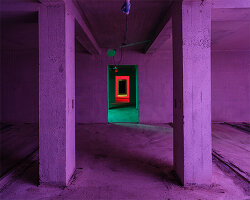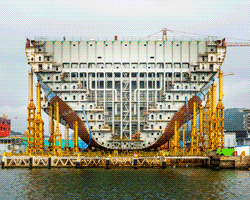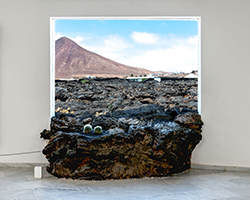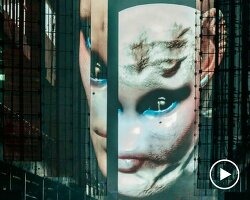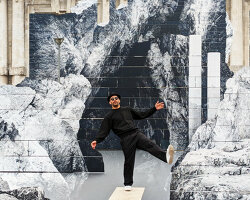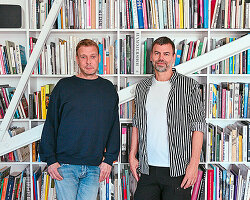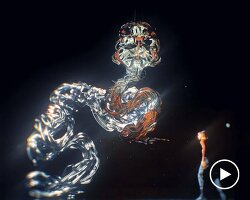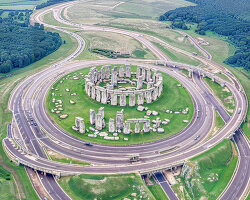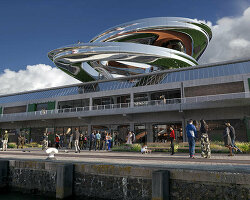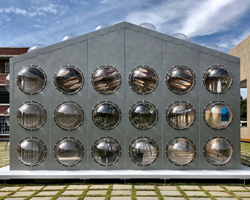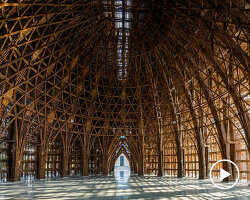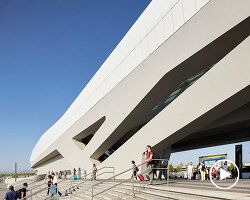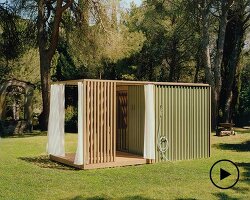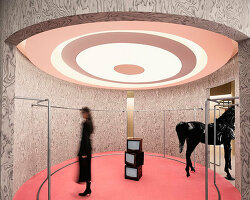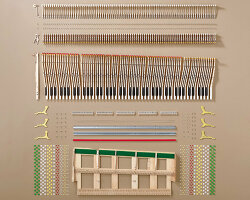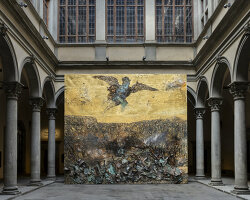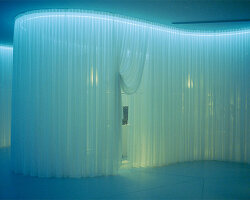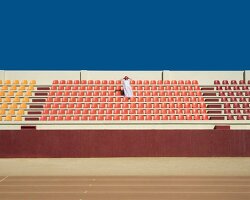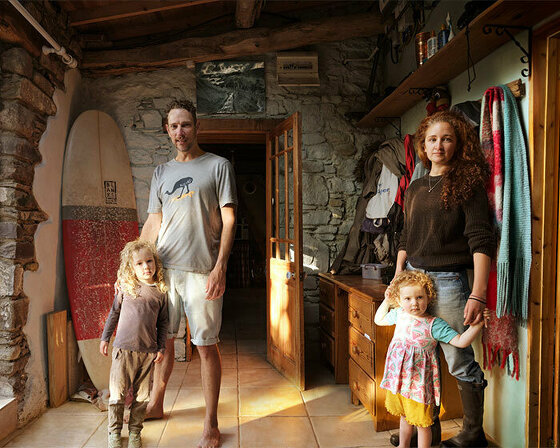‘I believe that most beautiful things have a little bit of ugliness to them,’ says alastair philip wiper, the photographer who has taken his lens everywhere from a nuclear fusion research center to a handmade sex doll workshop, ‘…a twist that makes them interesting.’ with a focus on the industrial, scientific and architectural fields, the british, copenhagen-based photographer snaps stunning and sometimes surreal scenes inside some of the world’s most secretive and unseen spaces. factories, facilities and places of work, knowledge and power become areas of aesthetic magnificence, with wiper summoning the symmetry of sausages, the vast and vibrant spectacle of a shoe factory floor, and the accidental allure of airplane manufacturing. ‘I see the machines and facilities that I photograph as symbols of our dreams and desires as humans,’ he shares, ‘they represent all the things we need and want, born of our own imaginations.’
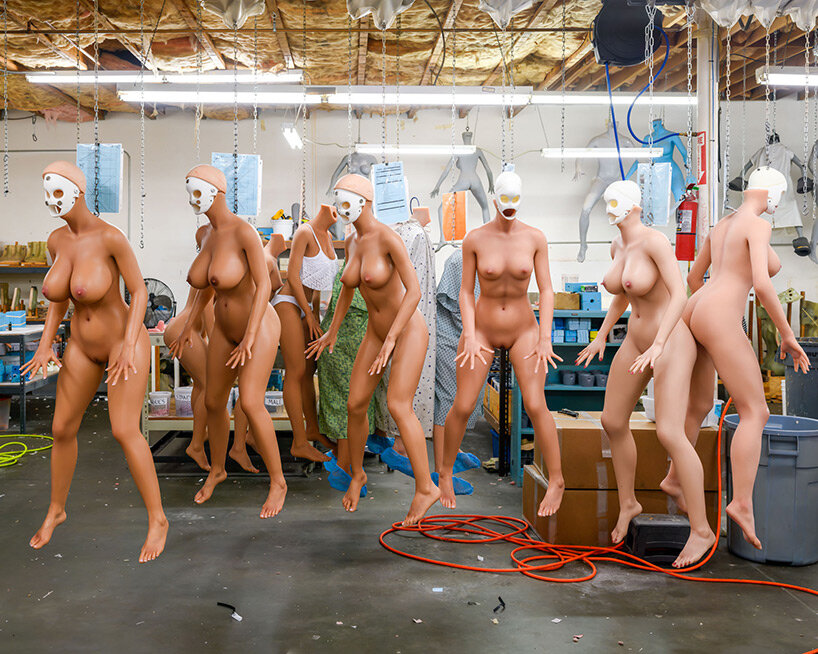
the RealDoll workshop, where 20-30 fully customisable sex dolls are made by hand, california | read more here
all images by alastair philip wiper | @alastairwiper
designboom spoke with alastair philip wiper about his interest in spaces of scientific and industrial significance, some of the surprising things he’s encountered on his visits, and the celebration of the human achievement behind the scenes.
designboom (DB): can you start by telling us about your background, and how you became involved in photography?
alastair philip wiper (APW): I came to photography quite late, in my late 20’s. I grew up in a town called guildford, south-west of london, and then studied philosophy with politics at the university of southampton. I was 21 when I finished my bachelor degree, and had no idea what I wanted to do, I just knew I wanted to get out of the UK and see something else, get away from the grey and the rain. ironically I ended up living in denmark, which is not exactly famed for its sunshine. after university I went to south america, did a couple of seasons as a ski bum in the alps, spent a summer as a cook on a greek island, worked as a roofer, lived in a camper van in south west france trying to surf, did all sorts of crappy and sometimes fun, sometimes awful jobs. I met a danish girl in 2004 when she was moving home I thought ‘why not?’ so I moved to copenhagen. I thought I would be here temporarily but now it’s been nearly 17 years…
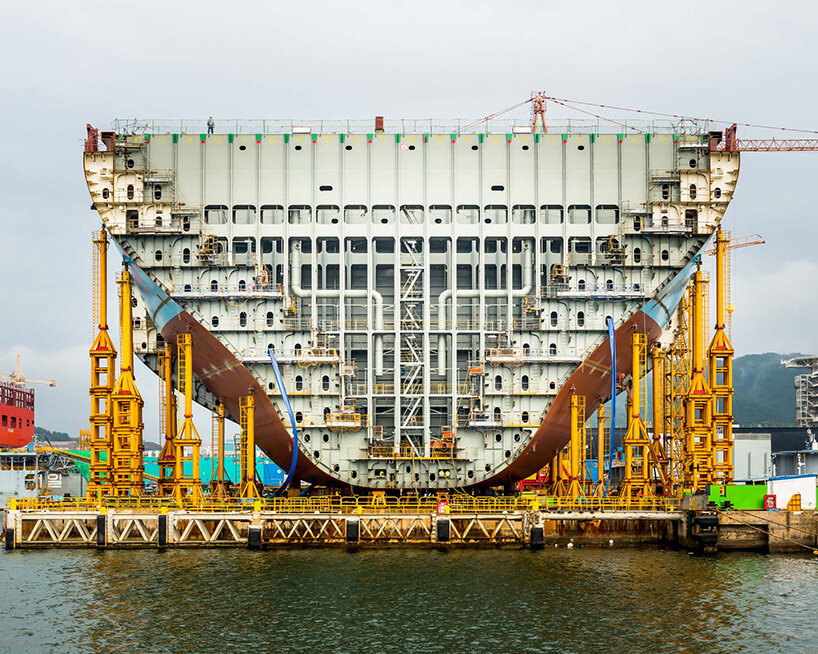
building the largest ship in the world, the maersk triple E, south korea | read more here
APW (continued): I was working as a cook when I came to denmark — food is another big passion in my life — but I knew I didn’t want to end up working as a chef for the rest of my life, so I was looking for something else, I didn’t know what. one day, for some reason I can’t quite explain as I had never done anything like this before, I started drawing designs for some T-shirts. I met someone that could print them, sold them all, and from that point decided I wanted to be a graphic designer. so I taught myself to use illustrator and photoshop, and was lucky to get a job with artist and fashion designer henrik vibskov doing prints, flyers, lookbooks, all the graphic work. it was great fun, I really learned a lot. they didn’t have a house photographer, so I started to take all the photos for the company — campaigns, shows — and then slowly I became more and more interested in the photography, I built a darkroom in my apartment and started experimenting with old film cameras, and then at one point about 10 years ago I decided I wanted to go full on with the photography on my own.
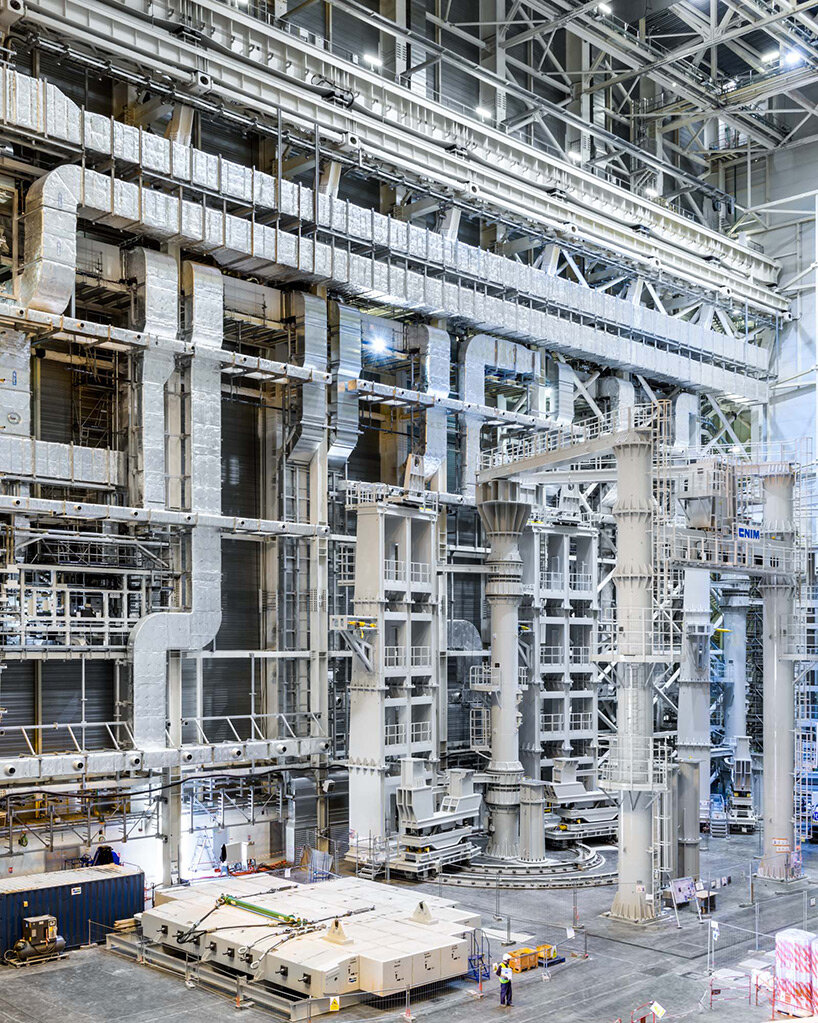
ITER nuclear fusion experiment, france | read more here
DB: how do you prepare in advance of a shoot?
APW: if it is a self initiated project, then gaining access to locations is the biggest part of the preparation. sometimes this can be surprisingly easy, sometimes painful — finding the right person to speak to, getting their attention, convincing them to let me in and that it will lead to something good. it is an art in itself. once I have access, if I can get any idea of the location or see some photos of it beforehand then that is great, but often I go in blind not knowing what to expect — which is also fun, that’s when the great surprises come.
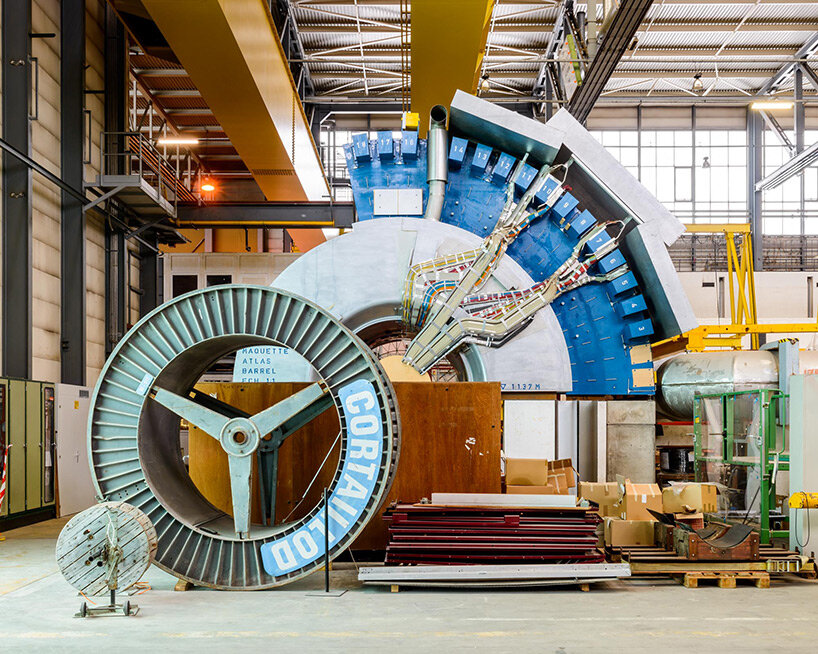
full scale plywood model of part of the atlas detector at CERN, switzerland, used for training | read more here
DB: when you arrive on site, what is the first thing you do?
APW: I try to take quick tour of the facility to get a sense of how big it is, where I want to spend my time, and how to approach the areas I want to concentrate on. the places I visit are usually utterly fascinating and I am often shown round by a scientist or engineer, so I try to suck up as much of that experience as possible.
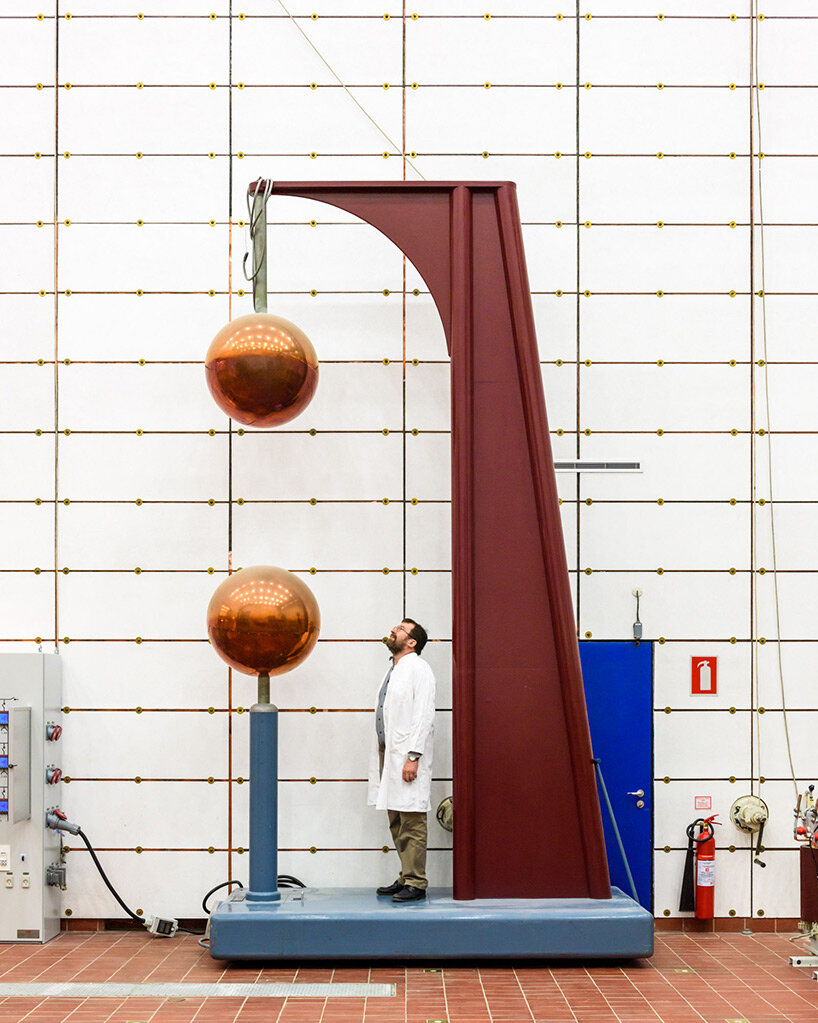
sphere gap at the high voltage laboratory at the technical university of denmark | read more here
DB: you’ve recently had a book come out — how do you characterize the work included in ‘unintended beauty’? is there a common thread that underpins your work overall?
APW: unintended beauty is a photographic exploration of scientific and industrial facilities around the world, which I have photographed over the last 10 years. showing things that happen behind the scenes, things that people don’t get to see every day, or don’t realise exist, is a big part of what I do. it is documentary in the sense that the things I photograph are very real, but I try to add an element of fantasy — I choose angles that show what I want to show, that don’t reveal too much or too little, so that hopefully people’s imaginations can get fired up about exactly what is happening in the picture. people should be drawn to the colours and the graphical elements, and then sucked into the details of the picture, and left wanting to know more about it. the idea of not understanding everything is important — I’m interested in the contrast between the things that the average person thinks they understand about the world and how much more complicated it really is.
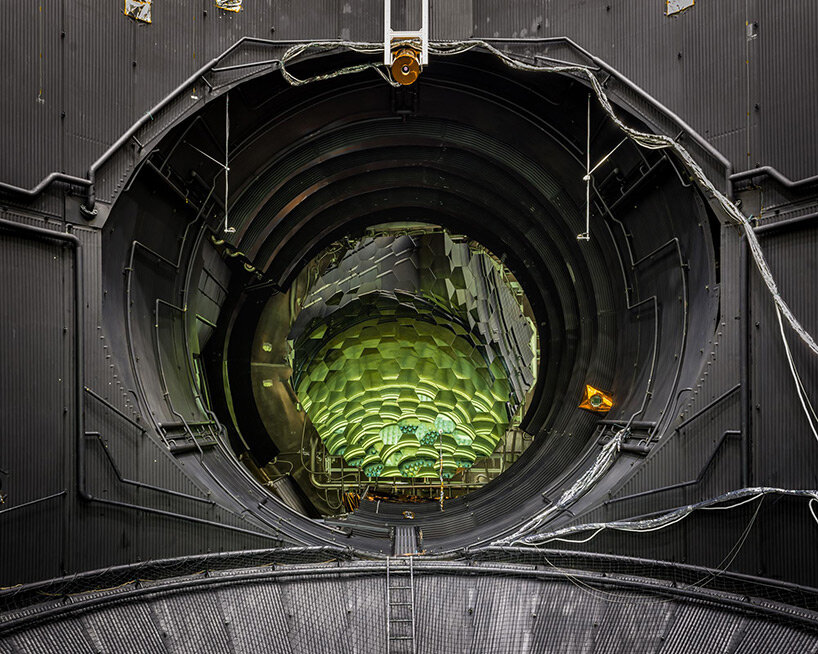
large space simulator at the test facilities of the ESA, the netherlands | read more here
DB: when did you become interested in spaces of scientific and industrial significance, and what draws you to these fields?
APW: when I decided that I wanted to pursue photography full time, I was looking for a niche, a subject that I could make my own. one day I discovered the work of some old industrial photographers, most notably wolfgang sievers and maurice broomfield, who were working in the 50’s and 60’s, and I had a lightbulb moment — I realised that that was what I wanted to do. I would travel the world seeing and learning about the most extraordinary things, and I could mix art with commercial and editorial work. one day I just decided that was what I was going to do, and went for it 100% trying to get access to any kind of facility I could and build up a portfolio. I wasn’t particularly interested in those subjects growing up, but perhaps that was an advantage, it was like a whole new world opened up for me.
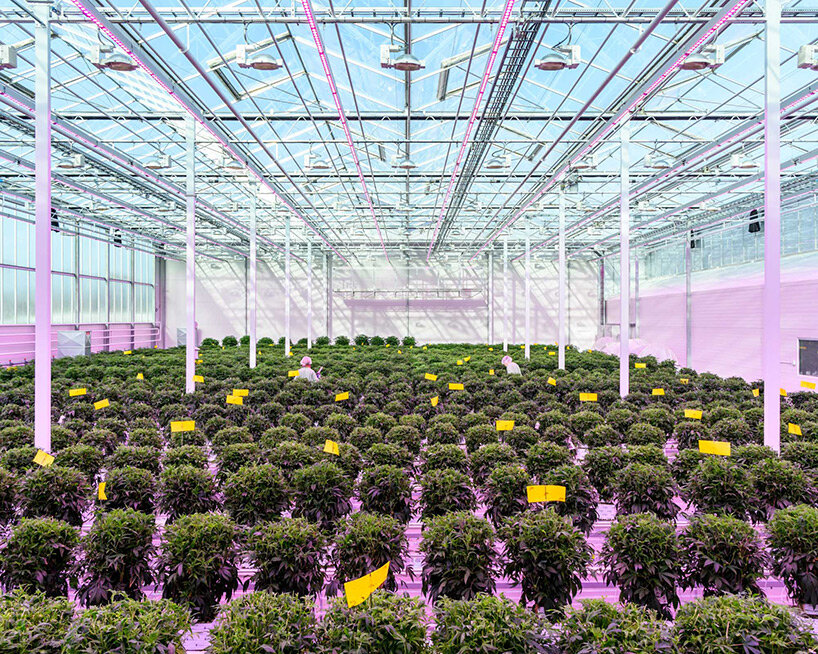
aurora cannabis, the largest producer of medical cannabis in europe, denmark | read more here
DB: so much photography captures something finished and polished, but your images often focus on things in production, progress, or a state of experimentation. what do you find beautiful about these scenes?
APW: I’m fascinated by the ingenuity of humans, the way that we can come together like ants and collaborate to build incredible machines and infrastructures that provide for us, and try to answer our questions about life and the universe and why we are here. I see the machines and facilities that I photograph as symbols of our dreams and desires as humans, they represent all the things we need and want, born of our own imaginations.
I also like the accidental nature of the aesthetics of these places — they are designed for practical reasons rather than aesthetic ones, and the result is often just bonkers. of course the idea of beauty is subjective, and I’m being deliberately provocative in calling my latest book ‘unintended beauty’ — some of the images are certainly not conventionally beautiful and many would argue represent the ugly side of humanity — but I believe that most beautiful things have a little bit of ugliness to them, a twist that makes them interesting.
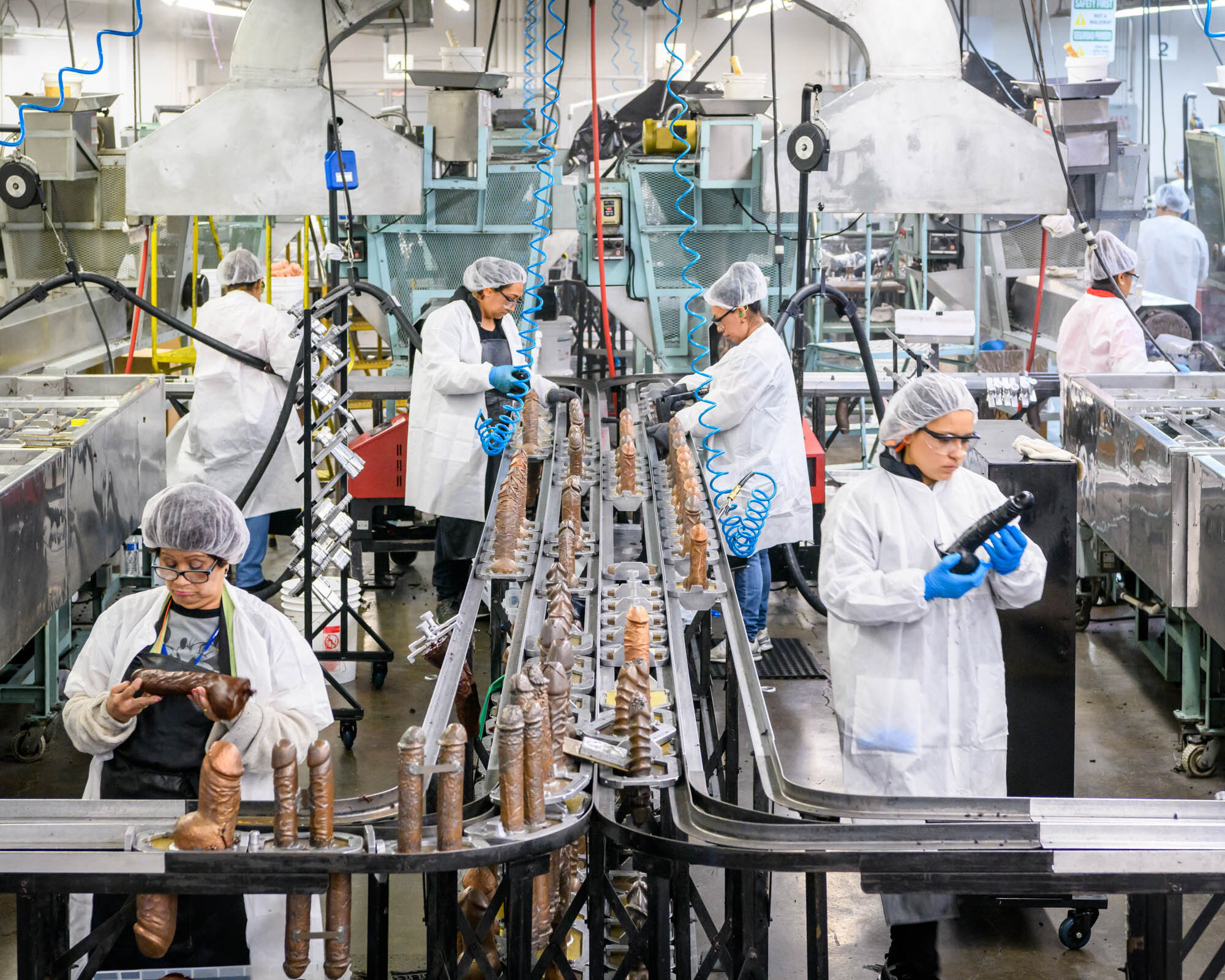
the factory floor at doc johnson in los angeles, where 450 employees produce 75,000 dildos per week
DB: while many of your images depict complex machinery and tools, they are also a real celebration of the human achievement behind the scenes. what do you hope they communicate about the people who work in these places?
APW: it’s true that many of my images don’t contain people, or that the people are relatively insignificant in the pictures — but I see my work as being all about people. everything in my images is man-made, born of our ingenuity and our ability to collaborate. it’s true that there are some geniuses at the top of the chain who come up with groundbreaking designs and experiments, but it takes normal people working together to make those ideas become real, and the ability of humans to achieve on mass what one person on their own could not, never ceases to amaze me. whether building giant container ships, or insanely complicated particle accelerators, or machines that stuff sausages, the things we build are usually impressive when you look closely.
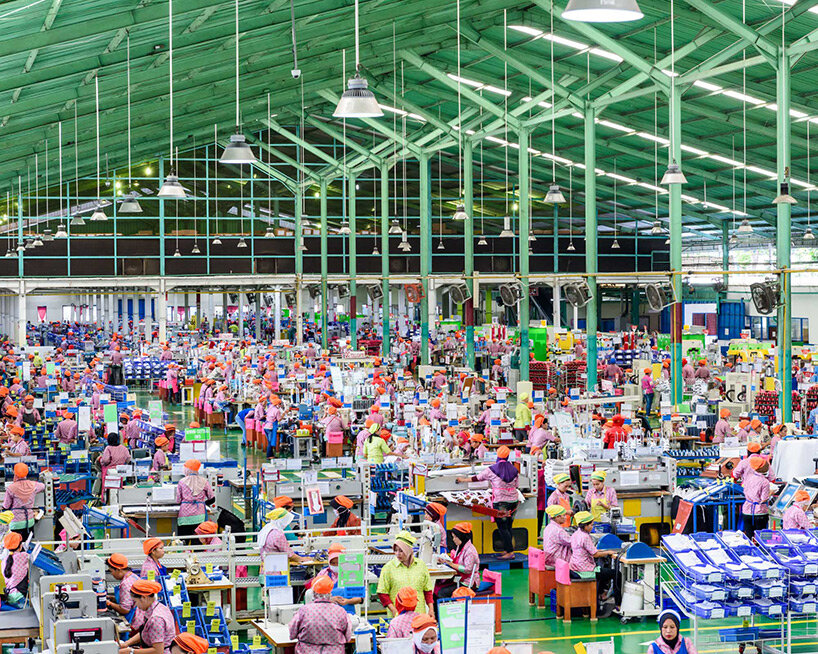
factory floor at adidas’ PWI shoe factory in indonesia | read more here
DB: in your visits to factories, testing facilities, and laboratories, what was the most interesting, or surprising, thing that you’ve learned?
APW: there has been a lot, but one thing that sticks out (no pun intended) is when I visited the dildo factory of doc johnson in los angeles. they are producing so many insanely large dildos, I realised that there are a lot of people in the world sticking very, very large objects inside their bodies.
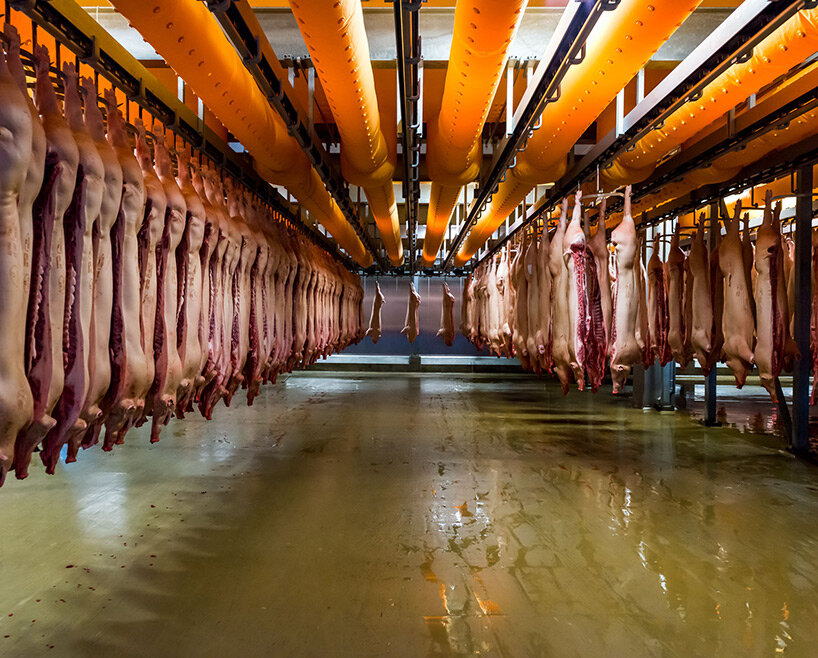
danish crown slaughterhouse, horsens, denmark | read more here
DB: is there something you’d like to photograph that you haven’t had access to?
APW: there is a chocolate factory just outside copenhagen that I have been trying to get access to for years, called toms. it was designed by the famous danish architect by arne jacobsen. whatever i do, they won’t let me in — I’ve had commissions to shoot it from big international media, in-flight magazines, danish national newspapers — but whatever I come with, they won’t let me in. I don’t know what they are hiding, it’s like willy wonka’s chocolate factory. I can get access to the large hadron collider, google data centres and nuclear power plants, but I can’t get into toms.
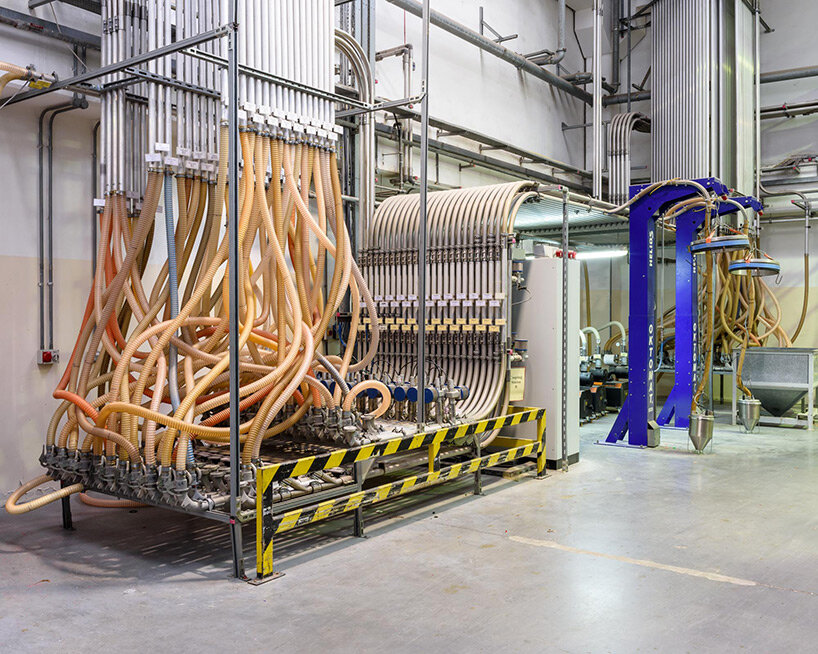
playmobil factory, malta | read more here
DB: what advice would you give to today’s young and aspiring photographers?
APW: the most amazing thing about being a photographer is being able to choose anything you are interested in and have a reason to find out more about it. be interested in the world — think less about photography and more about discovering and good work will come from that.
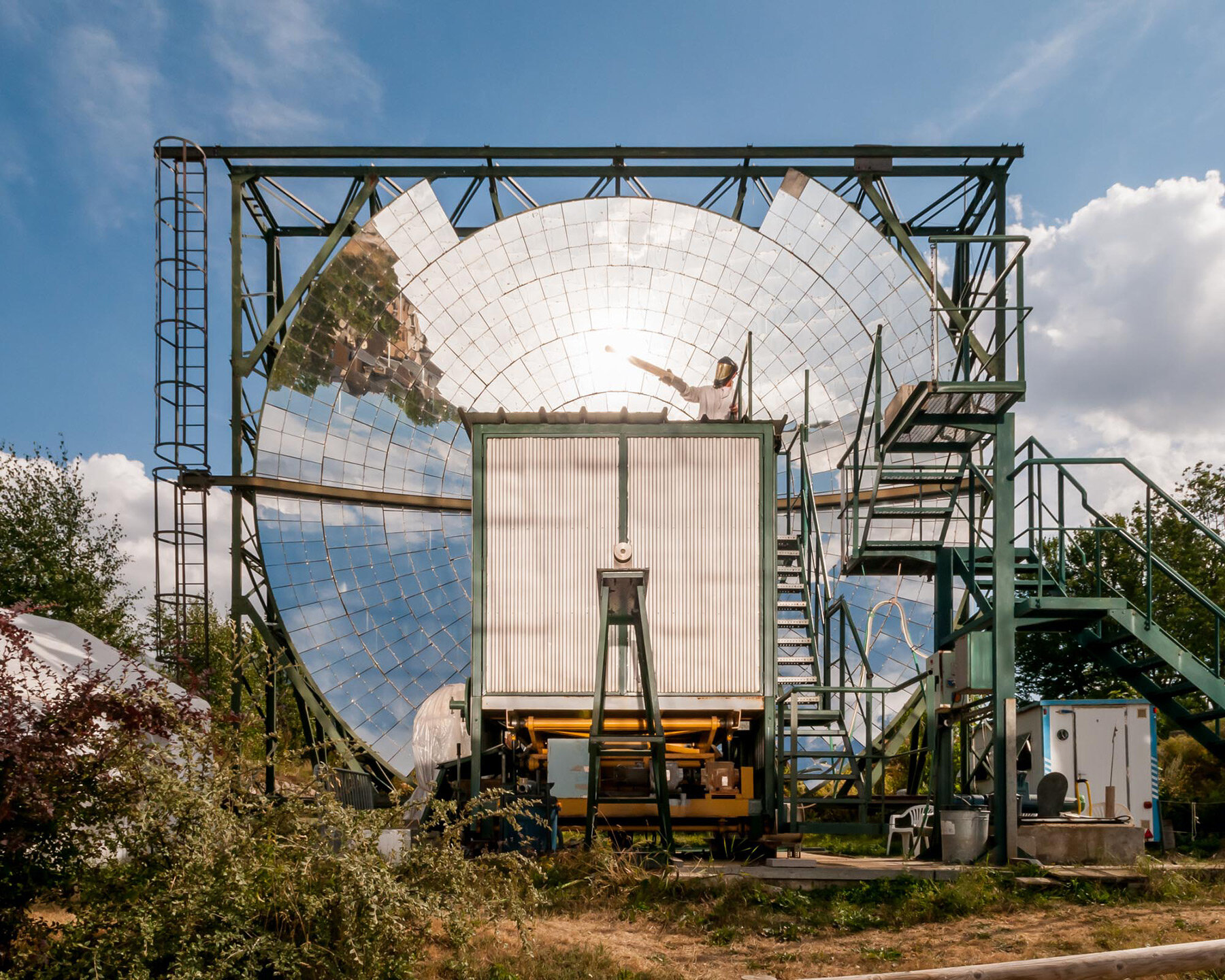
a solar furnace at an experimental solar energy facility in the french pyrenees
ALASTAIR PHILIP WIPER (6)
ART INTERVIEWS (122)
DBINSTAGRAM (2250)
PHOTOGRAPHY (372)
PRODUCT LIBRARY
a diverse digital database that acts as a valuable guide in gaining insight and information about a product directly from the manufacturer, and serves as a rich reference point in developing a project or scheme.
